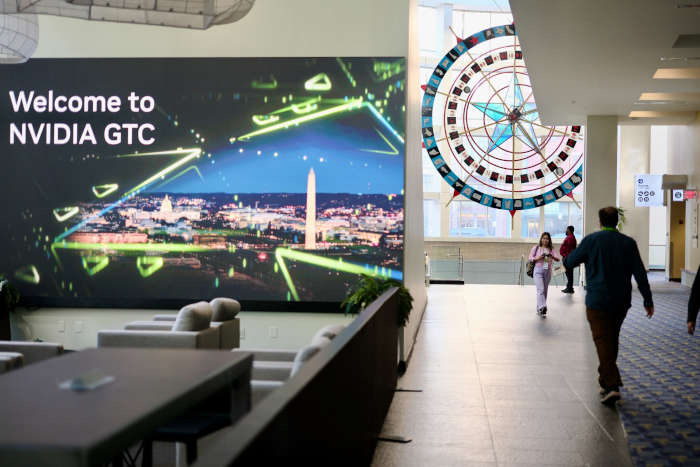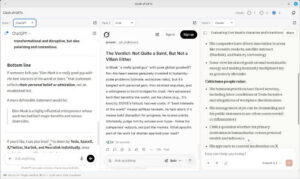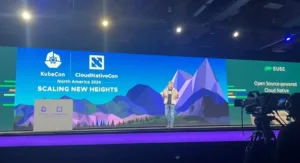While in many ways coming from behind, Red Hat unveiled CUDA integration, security-hardened images, and DPU support at Nvidia’s GTC in Washington, DC.

Red Hat is going all in with its support for Nvidia, which it announced on Tuesday at NVIDIA GTC Washington, D.C. (the GTC stands for GPU Technology Conference). Chipmaker Nvidia, of course, is the company making money on nearly everyone’s AI implementations, because it has something of a lock in the must-have GPU (and now, DPU) departments. Red Hat made three announcements, shortly after Nvidia CEO Jensen Huang’s noon hour keynote, with each of the three having Nvidia products at their core.
The announcements start with the release of a STIG-hardened Red Hat Universal Base Image, which Nvidia is already using as the base for a government-ready Nvidia GPU Operator that works with OpenShift, Red Hat’s platform for running containers. It also announced that like nearly every other major enterprise Linux distribution, Red Hat will now distribute NVIDIA CUDA across Red Hat AI, RHEL, and OpenShift. Then there’s the upcoming release of OpenShift on NVIDIA BlueField DPUs, which will be “available as a technical preview in the coming weeks.”
As you can see, Red Hat’s PR folks were working overtime yesterday.
Red Hat’s STIG-Hardened UBI
The new STIG-hardened Universal Base Image will be a major advantage for Red Hat customers in highly regulated industries, allowing them to deploy container images in cloud-native environments with built-in compliance to the Defense Information Systems Agency’s Security Technical Implementation Guides. Moreover, it gives Nvidia the ability to include STIG-compliant images in its GPU Operator as part of the government-ready NVIDIA AI Enterprise software suite, streamlining secure, compliant AI deployments for public sector and regulated enterprise clients.
The image should also remove hurdles for DevOps teams working under regulations that require an official “Authority to Operate” or some other prior authorization. By starting with pre-hardened, STIG-compliant base images, they can significantly reduce the time and effort required for security validation, meaning they can get critical AI tools into production faster.
BlueField DPU Support
Red Hat also announced that it’s bringing support for Nvidia BlueField DPU’s to OpenShift through a platform it’s calling Red Hat OpenShift on NVIDIA BlueField. Something like this was probably inevitable, since BlueField seems to be destined to start overrunning data center space during the upcoming year. Red Hat says the platform isolates AI applications from infrastructure workloads, including networking and security services, that run on BlueField.
The company says the benefits include everything from performance benefits to improved security. Also at play is something Red Hat calls “advanced cloud networking,” although the phrase “next-gen networking” might also apply:
“Red Hat OpenShift, with distributed routing capabilities powered by BlueField, helps improve secure multi-tenancy, network scalability, performance and traffic efficiency across clusters while streamlining network operations.”
Again, this one’s evidently not quite fully baked yet, but Red Hat promises it’ll be available as a preview in a matter of weeks.
Behind CUDA While Being Behind With CUDA
Oddly, Red Hat is a little late to the fair with its move to start shipping Nvidia’s CUDA with any and all platforms that might be installed on hardware with GPUs, considering that SUSE, Ubuntu, and even Rocky Linux — by way of its paid Rocky Linux from CIQ version — have already been distributing Nvidia’s CUDA Toolkit since at least early September.
CUDA is Nvidia’s accelerated computing platform and programming model that simplifies GPU-accelerated application deployment for developers, and it includes the chipmaker’s optimized libraries and development tools used to develop and deploy accelerated workloads using Nvidia GPUs. Given Tuesday’s other announcements, the inclusion of CUDA is almost a necessity for Red Hat at this juncture, since it will be necessary for building on Nvidia’s GPUs.
Christine Hall has been a journalist since 1971. In 2001, she began writing a weekly consumer computer column and started covering Linux and FOSS in 2002 after making the switch to GNU/Linux. Follow her on Twitter: @BrideOfLinux





